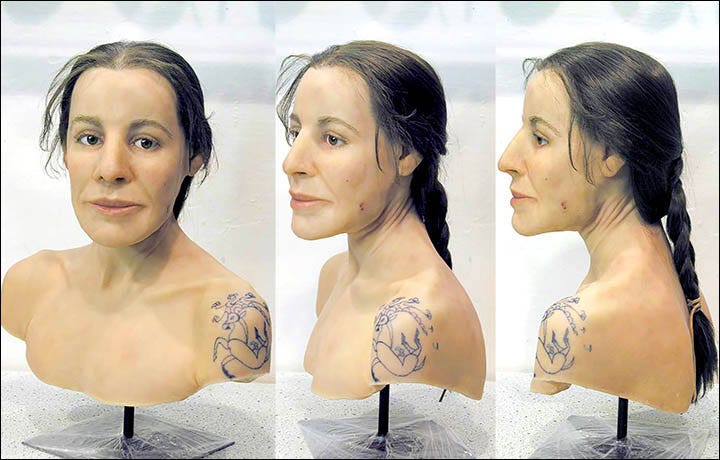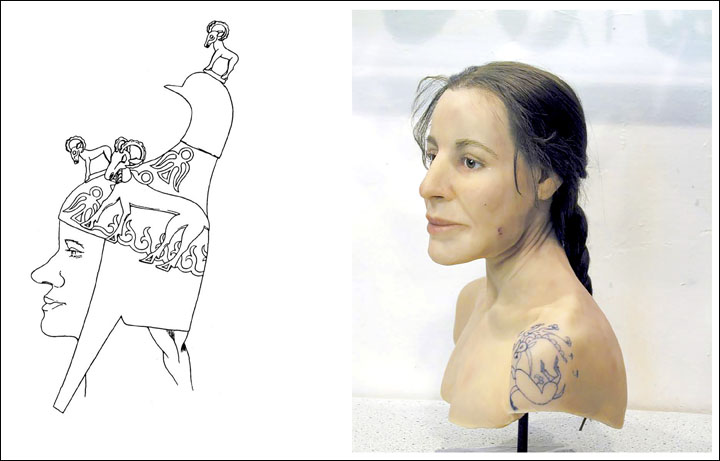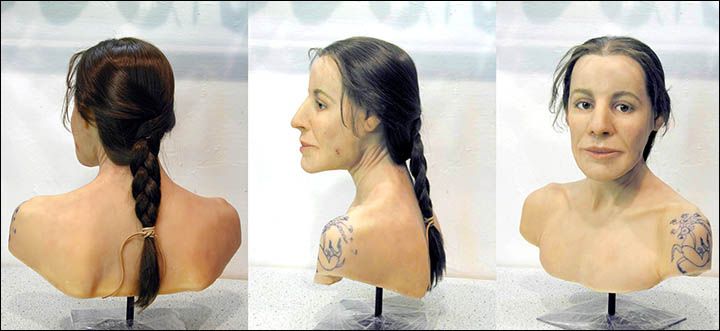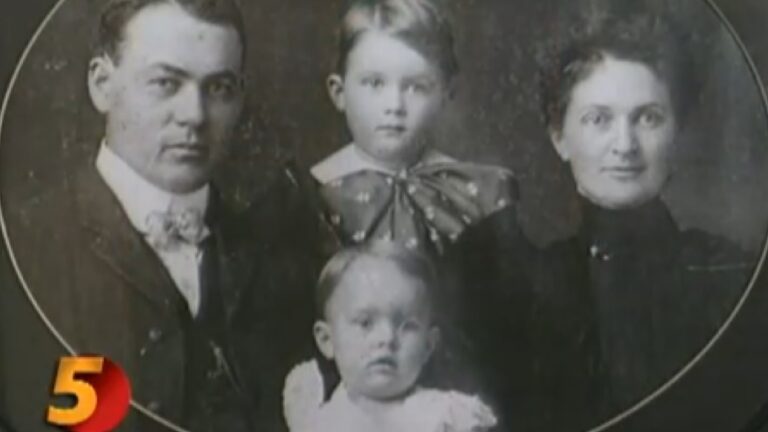The Secrets of the Siberian Ice Maiden: Unveiling Ancient Tattoos and Preservation
Explore the history of the Siberian Ice Maiden, an ancient mummy preserved in ice, and the mysterious tattoos that tell the story of a long-lost culture.
The discovery of the Siberian Ice Maiden, also known as the Princess of Ukok, opened a new window into the past. Her well-preserved remains, adorned with intricate tattoos, have provided valuable insight into the culture and beliefs of the ancient Pazyryk people. As one of the most famous archaeological finds of the 20th century, her tattoos offer a glimpse into the religious and social structure of her world.
Who Was the Siberian Ice Maiden?
The Siberian Ice Maiden is the preserved mummy of a woman from the 5th century BCE, believed to have been a member of the Pazyryk culture, a nomadic society that inhabited the Ukok Plateau in Siberia. Her body was discovered in 1993 by archaeologist Natalia Polosmak during an expedition. The maiden is famous for her incredible state of preservation, primarily due to the permafrost in which she was buried.
Biography of the Siberian Ice Maiden
| Attribute | Details |
|---|---|
| Name | Siberian Ice Maiden (Princess of Ukok) |
| Era | 5th Century BCE |
| Location | Ukok Plateau, Siberia |
| Culture | Pazyryk Culture |
| Cause of Death | Unknown (speculated to be from illness or ritual sacrifice) |
| Discovery | 1993 by Natalia Polosmak |
| Significance | Her tattoos and the state of preservation offered insights into Pazyryk life |
The maiden’s body was interred in a wooden chamber within a large burial mound. She was adorned in a silk blouse and felt skirt, with a tall headpiece and a fur coat, signifying her high status. Along with her, six horses were buried, further indicating her importance.
The Significance of the Siberian Ice Maiden’s Tattoos

One of the most remarkable features of the Siberian Ice Maiden is the intricate tattoos found on her body. These tattoos, preserved by the ice, have fascinated researchers, not only for their beauty but for their cultural significance.
Tattoo Designs and Their Symbolism
The tattoos on the Ice Maiden’s left arm and shoulder depict mythical creatures intertwined with animal motifs, representing a connection to the spiritual world. Most prominent is a deer with antlers that end in the heads of griffins, a mythical creature believed to protect the wearer from evil spirits. These designs are believed to be linked to shamanic rituals and a reflection of the Pazyryk belief system, where animals were revered as spiritual guides.
“Tattoos were a significant part of their identity and were likely used for both religious and social purposes,” says archaeologist Natalia Polosmak, the leader of the excavation.
Techniques Used in Ancient Tattooing
The ancient tattoo techniques used on the Ice Maiden were likely rudimentary yet highly skilled. The ink, made from soot and other natural elements, was embedded into the skin using a sharp instrument, possibly a bone needle. The placement of these tattoos was also significant, with most of the designs located on her left arm, which may indicate that they were meant to protect the heart and soul.
Preservation Techniques: How the Siberian Ice Maiden Survived
The Siberian Ice Maiden owes her remarkable preservation to the cold climate of the Ukok Plateau, which naturally mummified her body over centuries. The wooden coffin in which she was placed was surrounded by a thick layer of ice, effectively freezing her remains. This permafrost preserved not only her skin and tattoos but also her clothes, accessories, and even her burial chamber.
Natural Mummification in the Permafrost

The extreme cold of the Siberian landscape created the perfect conditions for the natural mummification of the body. The temperature was so low that it halted the decomposition process entirely, preserving her body for over 2,500 years. This unique preservation process has allowed researchers to study her tattoos in great detail and learn about the Pazyryk culture in ways that were previously impossible.
Cultural and Religious Importance of the Ice Maiden
The Siberian Ice Maiden was likely a high-ranking priestess or noblewoman within the Pazyryk society, based on the grandeur of her burial. Her tattoos suggest a deep connection to shamanic practices and spiritual beliefs. The animals depicted in her tattoos are believed to be totemic symbols that served to protect her in both life and death.
Ritual Sacrifice or Natural Death?
There is ongoing debate about how the Ice Maiden died. Some researchers suggest that she may have been ritually sacrificed, given the prominent status of her burial, while others argue that she may have died of illness. Studies on her remains indicate she may have suffered from breast cancer or osteomyelitis, both of which could have contributed to her death.
Scientific Insights from the Siberian Ice Maiden’s Body
Advances in technology have allowed scientists to conduct a wide range of studies on the Siberian Ice Maiden, including DNA analysis, radiocarbon dating, and CT scans. These studies have provided invaluable insights into her life, health, and even her appearance.
- DNA Analysis: Genetic testing reveals that the Ice Maiden likely had European and Scythian ancestry, which was common in the nomadic tribes of the region.
- CT Scans: A detailed scan of her skull and bones indicated that she suffered from a brain tumor, which may have contributed to her death.
What the Tattoos Reveal About Ancient Siberian Life
The tattoos on the Siberian Ice Maiden tell us a great deal about the Pazyryk culture and their view of the world. They saw the body as a canvas for their spiritual beliefs, and tattooing was an important ritual for marking one’s status, identity, and connection to the spiritual realm.
Tattoos as Status Symbols
In ancient Siberia, tattoos were not merely decorative; they were used to signify one’s status and identity. The elaborate designs on the Ice Maiden’s body suggest that she was a person of high rank, possibly a shaman or noblewoman. The choice of animals, such as deer and griffins, also indicates that tattoos were used to convey spiritual protection.
Modern Interpretations of the Siberian Ice Maiden
Today, the Siberian Ice Maiden has become a symbol of cultural heritage for the indigenous people of the Altai Republic. Her remains are currently held at the National Museum of the Republic of Altai, where they are seen as an essential part of the region’s cultural history. However, her display has been a source of controversy, as many believe that she should be returned to her original burial site as a matter of spiritual respect.
Cultural Repatriation Debate
The ongoing debate over whether the Siberian Ice Maiden should be returned to her burial mound is a reflection of the tension between scientific study and cultural respect. Indigenous groups in the Altai region argue that keeping her body on display violates their spiritual beliefs, while researchers insist that her study provides valuable historical insights.
“We believe that the Princess of Ukok should be returned to her resting place,” said a spokesperson for the Altai people, advocating for her reburial in 2012.
FAQs
What do the Siberian Ice Maiden’s tattoos represent?
The tattoos on her body, particularly those of mythical animals like griffins, represent spiritual protection and connections to the divine.
Why was the Siberian Ice Maiden so well preserved?
Her body was naturally mummified due to the freezing temperatures of the Siberian permafrost, which prevented decomposition.
Where is the Siberian Ice Maiden now?
The Siberian Ice Maiden is currently held at the National Museum of the Republic of Altai.
References:
- https://www.historydefined.net/seawise-gaint https://www.historydefined.net/seawise-gaint
- https://www.historydefined.net/siberian-ice-maiden https://www.historydefined.net/siberian-ice-maiden






